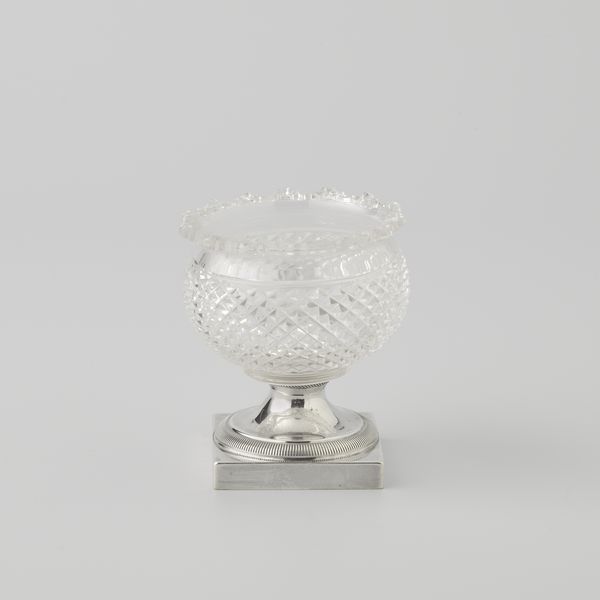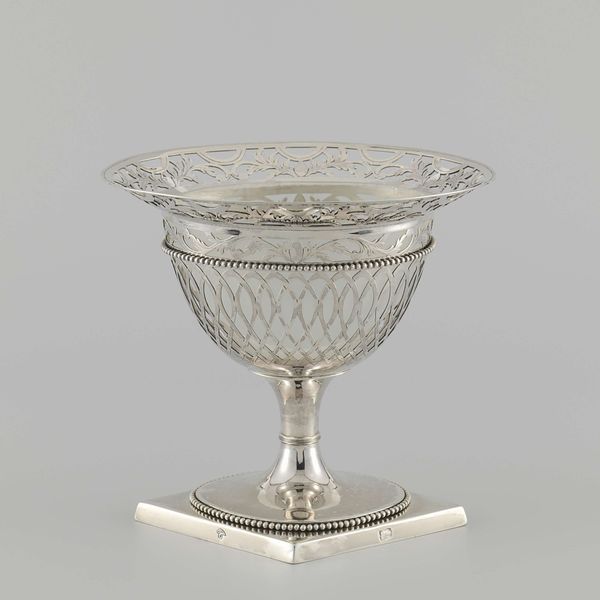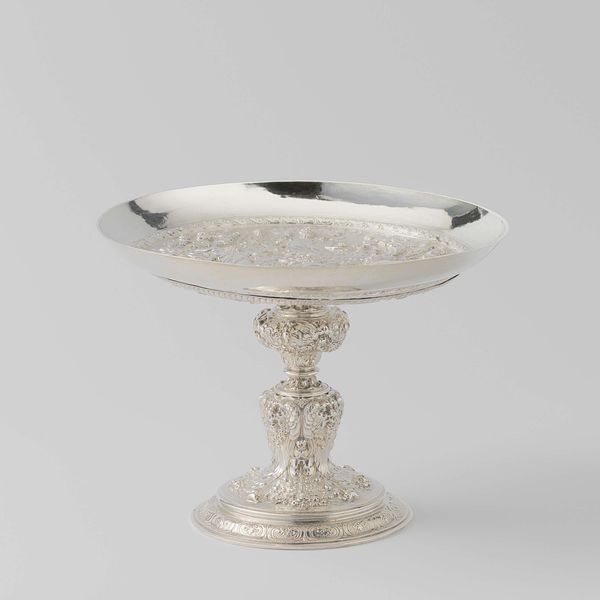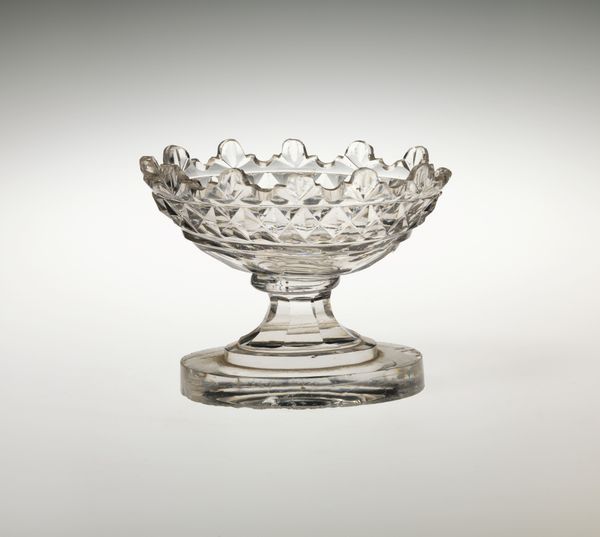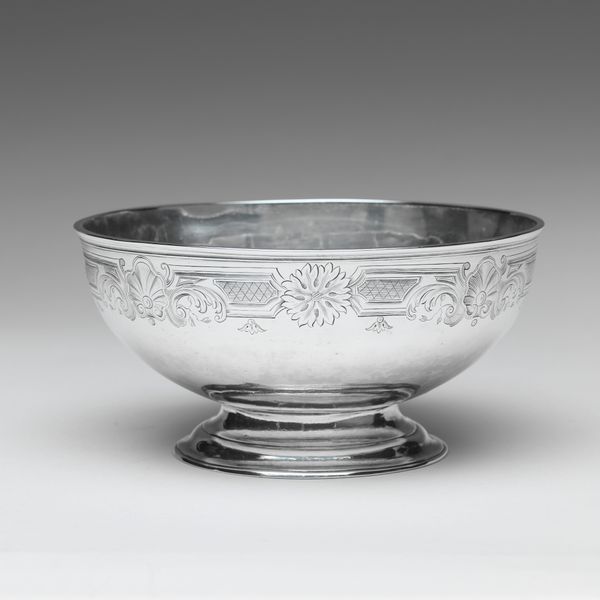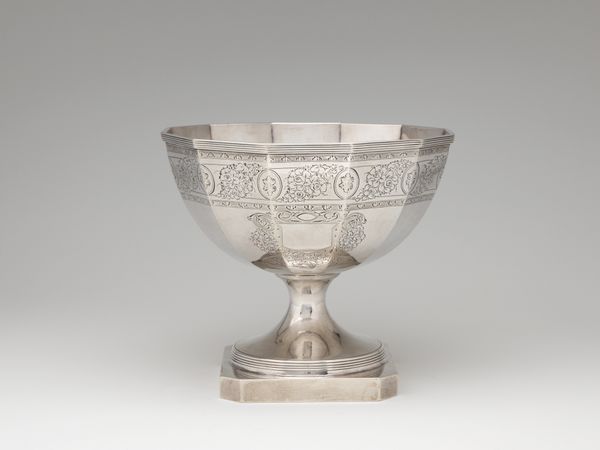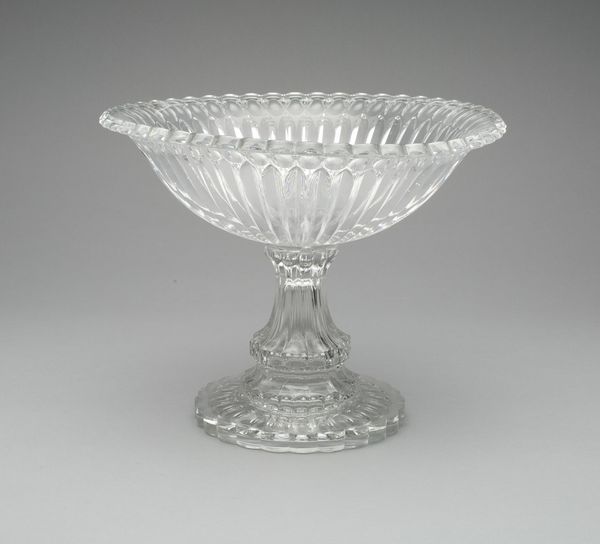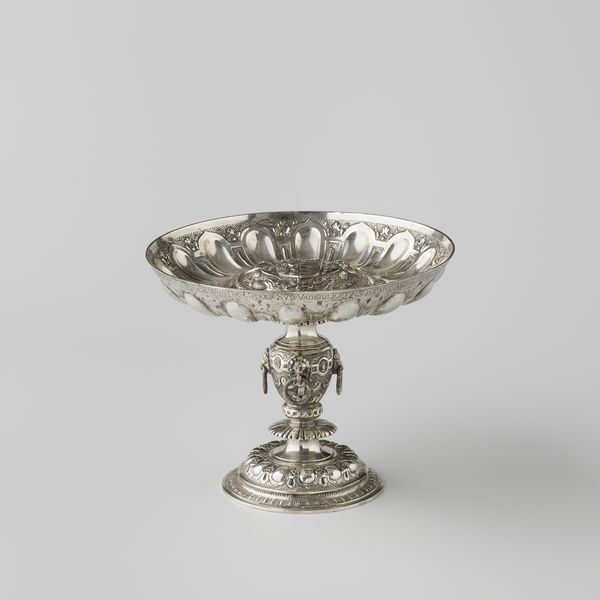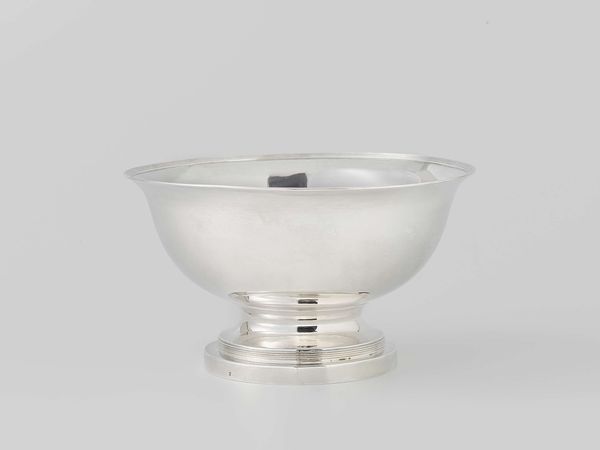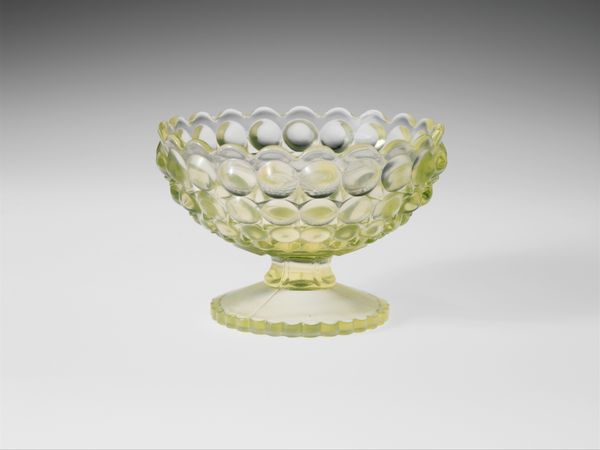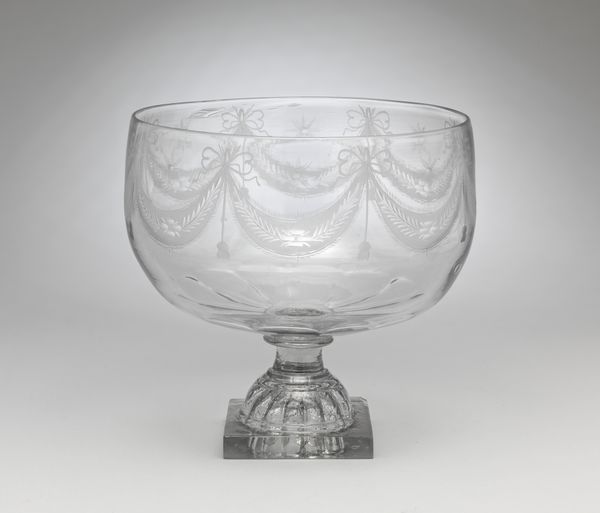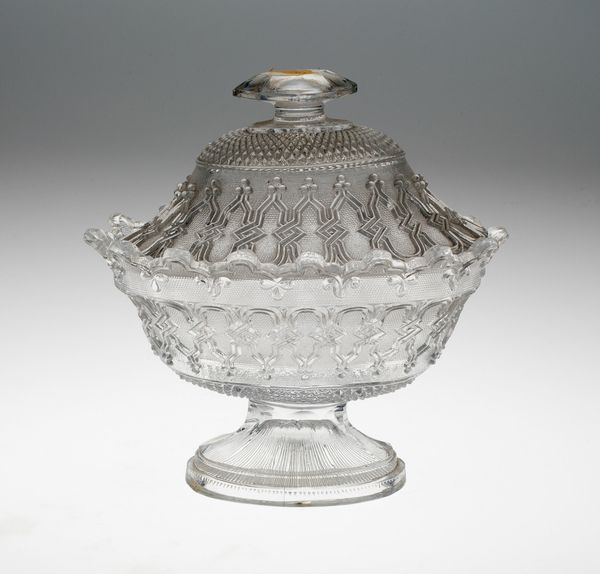
silver, glass, sculpture
#
neoclacissism
#
silver
#
glass
#
sculpture
Dimensions: height 6.8 cm, width 4.9 cm, depth 4.9 cm, diameter 6.7 cm, weight 225 gr
Copyright: Rijks Museum: Open Domain
Curator: Standing before us, we have a striking salt cellar crafted around 1830 by Firma Bennewitz en Zonen. Its formal title is "Zoutvat bolvormig op vierkante voet." The combination of materials--silver and glass--is quite captivating, isn't it? Editor: It is! My first impression is the play of light. The cut glass catches every bit of illumination, creating a dazzling effect above the muted solidity of the silver base. It almost feels like a miniature stage setting. Curator: Indeed. Thinking about its production, that cut glass bowl suggests skilled labor and specialized tools. Were these crafted locally or imported, one wonders? Salt cellars of this period became luxury goods during colonial expansion when salt became part of trade networks tied to labor exploitation. Editor: Precisely! I see this as a microcosm of larger social structures. Salt was no longer just a commodity but a symbol of wealth and power. Who had access to this object, and what did its presence on a dining table signify about their social standing? I bet access was racialized and gendered at that time, with working class women and enslaved populations less able to use or access the object. Curator: Right, the production itself involves various supply chains, from silver mining, glassblowing techniques and the economic dynamics that facilitated such refined items for elite households. It would be valuable to trace back to the material origins and document who benefits from the process and extraction. Editor: Absolutely, the visual elegance could mask some hard realities related to colonial and labor injustices. In examining the materials, it's not enough to note glass or silver – we must unpack the socio-political framework informing production. Curator: Ultimately, understanding how material culture intersects with socio-economic narratives transforms this diminutive object into a portal to historical power dynamics. We begin to consider value as attached to much more than aesthetics and begin seeing the implications of use as political statement. Editor: Exactly. Considering it beyond its functionality reveals how aesthetics were used to enforce hierarchical paradigms prevalent during that time. It pushes us toward intersectional dialogue regarding not just the art object, but the culture it represents.
Comments
No comments
Be the first to comment and join the conversation on the ultimate creative platform.
